The Camino de Santiago

Visiting the Camino de Santiago, also known as the Way of St. James, can be a rewarding and transformative experience. It is a popular pilgrimage route in northern Spain, attracting thousands of travelers from around the world.
Here’s a step-by-step guide on how to walk the Camino de Santiago
Step-by-step guide on how to bike, car and train the Camino de Santiago
Here is the most popular Camino Francés route
Other notable routes on the Camino de Santiago
Here’s a step-by-step guide on how to walk the Camino de Santiago
Plan your route: The Camino de Santiago consists of several routes, each with its own starting point and distance. The most popular route is the Camino Francés, which starts in St. Jean Pied de Port, France, and ends in Santiago de Compostela, Spain. Research the different routes and choose the one that suits your preferences and available time.
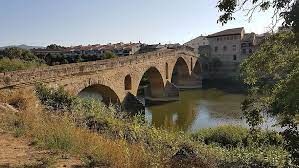
Decide on your duration: The length of the Camino de Santiago varies depending on the route you choose. The Camino Francés, for example, is approximately 800 kilometers (500 miles) long and typically takes around 4-6 weeks to complete. Determine how much time you can allocate for the journey, keeping in mind that you can also walk shorter sections if you have limited time.

Obtain a Pilgrim Credential: The Pilgrim Credential, also known as the Pilgrim Passport, is an essential document for those walking the Camino de Santiago. It allows you to stay in the pilgrim accommodations along the way and serves as proof that you have completed the pilgrimage. You can obtain the credential from your local Camino de Santiago association or at the starting point of your chosen route.
Pack your essentials: Prepare a backpack with the necessary items for your journey. Include comfortable walking shoes, lightweight clothing suitable for different weather conditions, a sleeping bag, toiletries, a hat, sunscreen, a water bottle, and a guidebook or map of the Camino route. It’s important to pack light to avoid unnecessary strain during your walk.

Arrange accommodations: Along the Camino de Santiago, you’ll find various types of accommodations, including albergues (pilgrim hostels), guesthouses, hotels, and camping sites. Albergues are specifically designed for pilgrims and offer an affordable and communal experience. Make reservations in advance if you prefer private accommodations, especially during peak seasons.
Begin your journey: Once you have everything ready, head to the starting point of your chosen route. Follow the yellow arrows or scallop shell signs along the way, as they mark the path of the Camino de Santiago. Take your time to enjoy the beautiful landscapes, interact with fellow pilgrims, and immerse yourself in the experience.
Take care of yourself: Walking the Camino de Santiago can be physically demanding, so it’s important to take care of your health. Stay hydrated, rest when needed, and listen to your body. It’s also a good idea to carry some snacks and a basic first aid kit with you.
Step-by-step guide on how to bike, car and train the Camino de Santiago
While the Camino Francés is primarily a walking pilgrimage route, you can still explore and visit its iconic towns and landmarks by car and train. Here’s a general guide on how to experience the Camino Francés using these modes of transportation:
It is possible to use a bicycle to travel along the walking routes of the Camino de Santiago. Many pilgrims choose to cycle the Camino as it allows for faster travel and covers longer distances within a shorter timeframe. Here are some key points to consider when cycling the Camino routes:
Choose a suitable route: While most Camino routes are accessible for cyclists, some may be more challenging due to rough terrain or steep inclines. The Camino Francés, Camino Portugués, and Camino del Norte are popular routes for cycling. Research the specific route you plan to take and ensure it is suitable for cycling.
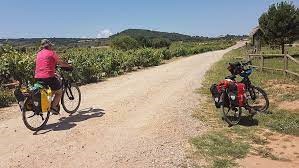
Prepare your bike: Make sure your bicycle is in good working condition. Check the brakes, gears, tires, and any other components. It’s advisable to use a sturdy and reliable bike, preferably a hybrid or mountain bike, as they are better suited for off-road sections and varied terrain.
Pack essential gear: Carry the necessary equipment and gear for your cycling journey. This includes a helmet, spare inner tubes, repair tools, a bike lock, a water bottle, cycling clothes, and panniers or a backpack for carrying your belongings.
Plan your daily distances: Determine how far you want to cycle each day based on your fitness level and preferences. Keep in mind that cycling distances can be longer than walking distances, so be realistic about what you can comfortably cover each day.

Arrange accommodations: Along the Camino routes, you’ll find accommodations specifically catering to cyclists, such as cyclist-friendly hostels and guesthouses. It’s advisable to make reservations in advance, especially during peak seasons, to ensure availability.
Follow the Camino markers: Look out for the distinctive yellow arrows or scallop shell signs that mark the Camino routes. They guide both walkers and cyclists along the path. Be considerate of walkers and other cyclists and maintain a safe distance while on the trail.

Experience the Camino: While cycling the Camino offers a different perspective, take the time to soak in the atmosphere, appreciate the surroundings, and engage with fellow pilgrims. You can still visit historic sites, enjoy local cuisine, and experience the cultural aspects of the Camino.
Arriving in Santiago de Compostela: Upon reaching Santiago de Compostela, follow the route to the Cathedral, where you can receive your Compostela certificate and attend the pilgrim’s mass.
Cycling the Camino can be physically demanding, so ensure you have the necessary fitness level and stamina to cover the distances comfortably. It’s also essential to respect the rules and guidelines of the Camino, including the proper use of the designated cycling paths and respecting the rights of pedestrians and other pilgrims.
Plan your itinerary: Decide which towns and landmarks along the Camino Francés you would like to visit. Some notable places include St. Jean Pied de Port, Roncesvalles, Pamplona, Burgos, León, and Santiago de Compostela. Research the distances, driving routes, and estimated travel times between these locations.
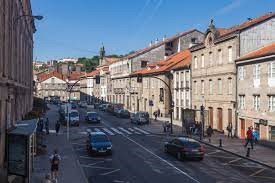
Rent a car: If you don’t have access to a car, rent one from a car rental company in a nearby city or airport. Make sure to book in advance to secure the best rates and availability.
Drive to your desired starting point: Begin your journey by driving to your chosen starting point on the Camino Francés, such as St. Jean Pied de Port or Roncesvalles. Use a GPS or navigation app to guide you along the most suitable roads.
Explore towns and landmarks: Park your car in designated areas and explore the towns and landmarks along the Camino Francés. Take your time to visit the historic sites, enjoy local cuisine, and immerse yourself in the cultural atmosphere.
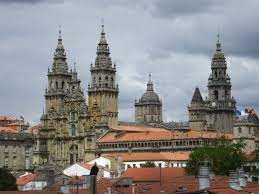
Continue your journey: Move from one town to another, following the route of the Camino Francés. Drive at your own pace, stopping as desired to explore places of interest or scenic viewpoints.
Reach Santiago de Compostela: Finally, drive to Santiago de Compostela, the endpoint of the Camino Francés. Find suitable parking in the city and explore the historic center, including the Santiago Cathedral, where pilgrims traditionally conclude their pilgrimage.
Determine your starting point: Decide where you want to begin your journey on the Camino Francés. Choose a town with good train connections, such as Pamplona, Burgos, or León.
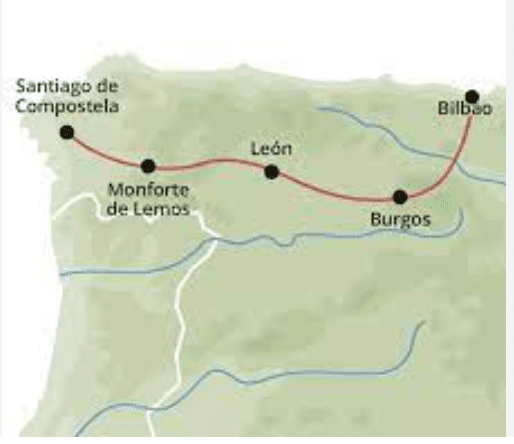
Check train schedules and routes: Research train schedules, routes, and connections to plan your journey. Use reputable online platforms or consult with local train operators for up-to-date information.
Purchase train tickets: Buy train tickets for each leg of your journey. Consider buying tickets in advance to secure your preferred departure times and seating arrangements.
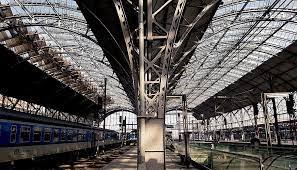
Board the train: Arrive at the train station in your starting point town and board the train bound for your next destination along the Camino Francés. Ensure you have all necessary tickets, identification, and luggage with you.
Explore towns and landmarks: Disembark at each destination and explore the towns and landmarks along the Camino Francés. Use public transportation, taxis, or walking to move around within the towns.
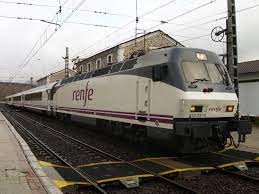
Continue your journey: Catch the next train to your next desired destination. Be mindful of train schedules and plan your time accordingly to make smooth connections.
Reach Santiago de Compostela: Arrive in Santiago de Compostela by train. The train station is located within walking distance of the historic center. From there, explore the city and its famous Santiago Cathedral.
Please note that using car or train to explore the Camino Francés allows you to visit specific towns and landmarks, but it won’t replicate the full pilgrimage experience of walking the entire route. Nonetheless, it can still provide a glimpse into the culture, history, and beauty of the Camino Francés.
Here is the most popular Camino Francés route
Arrive in Santiago de Compostela: The endpoint of the Camino de Santiago is the city of Santiago de Compostela, where the remains of St. James are believed to be buried. Upon arrival, make your way to the Pilgrim’s Office (Oficina del Peregrino) to have your Pilgrim Credential stamped and receive the Compostela certificate, a recognition of your pilgrimage.
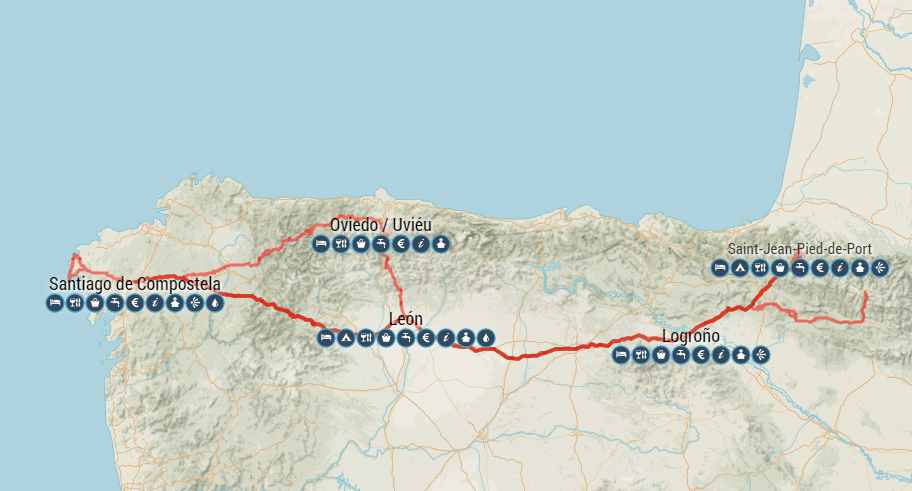 Click the image for a day-by-day suggested itinerary
Click the image for a day-by-day suggested itinerary
Remember that the Camino de Santiago is not just a physical journey but also a spiritual and personal one. Take the time to reflect, connect with yourself and others, and embrace the unique experiences along the way. Buen Camino!
The Camino Francés is the most popular and well-known route of the Camino de Santiago. It begins in the town of St. Jean Pied de Port in France and ends in Santiago de Compostela in Spain. Here’s an overview of the Camino Francés route:
St. Jean Pied de Port to Roncesvalles: This is the first stage of the Camino Francés, crossing the Pyrenees Mountains. It is a challenging but rewarding section, covering about 27 kilometers (17 miles). The route takes you through picturesque landscapes and provides stunning views.
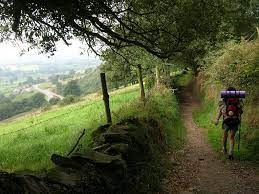
Roncesvalles to Pamplona: This stage is approximately 75 kilometers (47 miles) long and takes you through the Navarre region of Spain. It includes charming villages, rolling hills, and the historic city of Pamplona, famous for its Running of the Bulls festival.
Pamplona to Logroño: This section covers around 90 kilometers (56 miles) and leads you through vineyards and rural landscapes. It includes towns like Puente la Reina, known for its Romanesque bridge, and Estella, with its rich historical heritage.
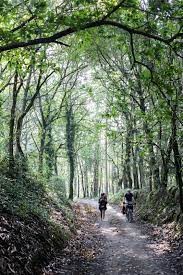
Logroño to Burgos: This stage is approximately 105 kilometers (65 miles) long and takes you through the famous wine region of La Rioja. You’ll pass through charming towns like Nájera, Santo Domingo de la Calzada, and the historic city of Burgos, home to the magnificent Burgos Cathedral.
Burgos to León: This section covers about 135 kilometers (84 miles) and includes the beautiful meseta, a vast plateau. You’ll pass through picturesque villages, such as Castrojeriz, and reach the city of León, known for its stunning Gothic cathedral.
León to Ponferrada: This stage is approximately 105 kilometers (65 miles) long. It takes you through the Bierzo region, known for its vineyards and picturesque landscapes. Ponferrada is a highlight, with its Templar Castle.
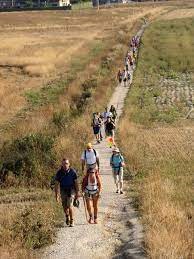
Ponferrada to Sarria: This section covers about 200 kilometers (124 miles) and passes through charming Galician villages and lush green landscapes. Sarria is a common starting point for many pilgrims, as it is the minimum distance required to earn the Compostela certificate.
Sarria to Santiago de Compostela: This final stage of the Camino Francés covers around 115 kilometers (71 miles). It takes you through beautiful Galician countryside and includes iconic places like Portomarín, Palas de Rei, and Melide. Finally, you’ll arrive in the magnificent city of Santiago de Compostela, where the pilgrimage culminates at the Santiago Cathedral.
The Camino Francés offers a diverse range of landscapes, cultural experiences, and historical sites, making it a popular choice for pilgrims seeking an enriching journey.
Other notable routes on the Camino de Santiago
Apart from the Camino Francés, there are several other popular routes on the Camino de Santiago. Here are a few notable ones:
The Camino del Norte, also known as the Northern Way, follows the northern coast of Spain. It starts in the Basque city of Irún and extends through beautiful coastal landscapes, picturesque villages, and vibrant cities such as Bilbao, Santander, and Gijón. This route is known for its scenic beauty but can be more challenging due to its hilly terrain.
 Click the image for a day-by-day suggested itinerary
Click the image for a day-by-day suggested itinerary

The Camino Portugués, or Portuguese Way, is the second most popular route to Santiago de Compostela. It begins in various locations in Portugal, including Lisbon, Porto, or Tui (on the Spanish-Portuguese border), and crosses into Spain. This route offers a mix of rural landscapes, historical towns, and cultural experiences. It is known for its vineyards, Romanesque architecture, and delicious local cuisine.
 Click the image for a day-by-day suggested itinerary (courtesy of caminoways.com)
Click the image for a day-by-day suggested itinerary (courtesy of caminoways.com)
The Camino Primitivo, or Primitivo Way, is considered the original route of the Camino de Santiago. It starts in the city of Oviedo in northern Spain and covers approximately 320 kilometers (200 miles) to Santiago de Compostela. This route is known for its mountainous terrain, lush landscapes, and rich history. It is recommended for experienced hikers due to its challenging elevation changes.
 Click the image for a day-by-day suggested itinerary (courtesy of stingynomads.com/)
Click the image for a day-by-day suggested itinerary (courtesy of stingynomads.com/)
The Via de la Plata, or Silver Way, is one of the longest Camino routes, stretching approximately 1,000 kilometers (620 miles). It starts in the city of Seville in southern Spain and passes through historic cities like Mérida and Salamanca before merging with the Camino Francés in Astorga. This route offers diverse landscapes, including plains, mountains, and rural areas, and showcases the Roman heritage of the region.
 Click the image for a day-by-day suggested itinerary
Click the image for a day-by-day suggested itinerary
These are just a few examples of popular Camino de Santiago routes. Each route has its own unique characteristics, landscapes, and cultural experiences. It’s essential to research and choose the route that aligns with your interests, available time, and physical abilities.
 United Kingdom
United Kingdom United States
United States Asia Pacific
Asia Pacific

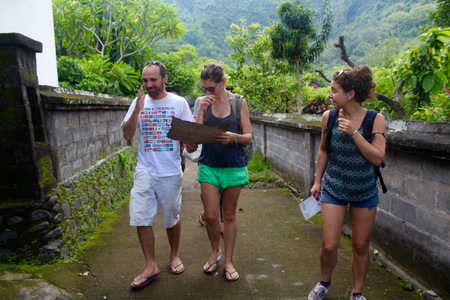


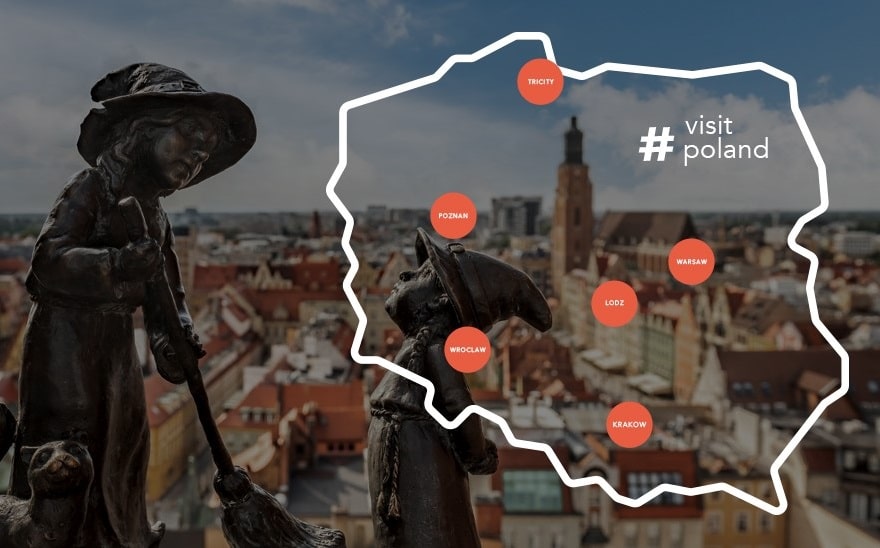

















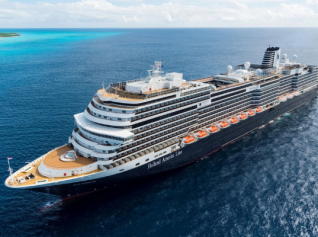








Qatar Airways adding Manchester flights
EU entry-exit system delayed again
ATC strike in Greece could disrupt flights this week
Jet2 unveils Samos as new Greek destination for summer 2026
Carnival Cruise Line hosts Prague getaway for Fun Ambassadors